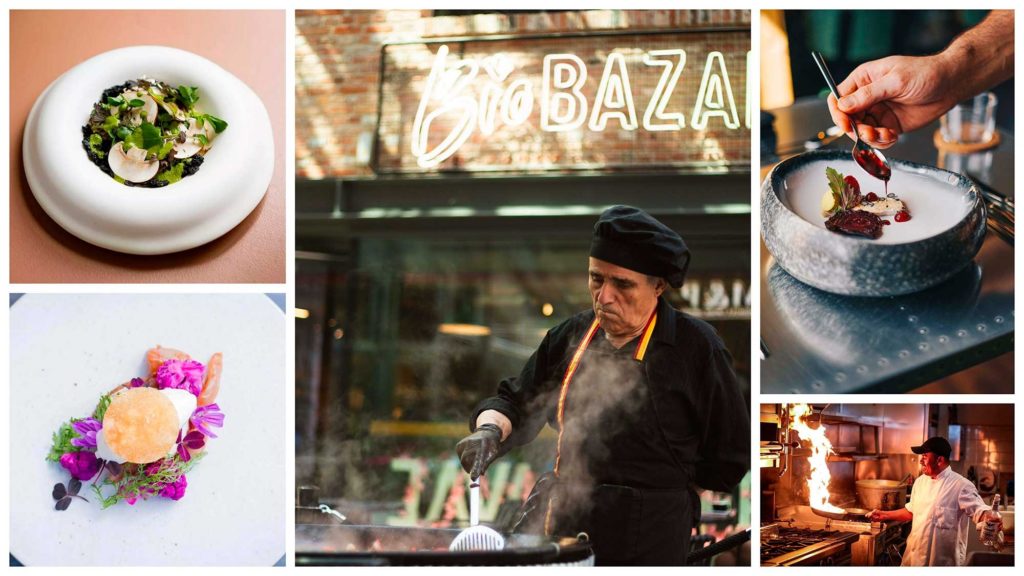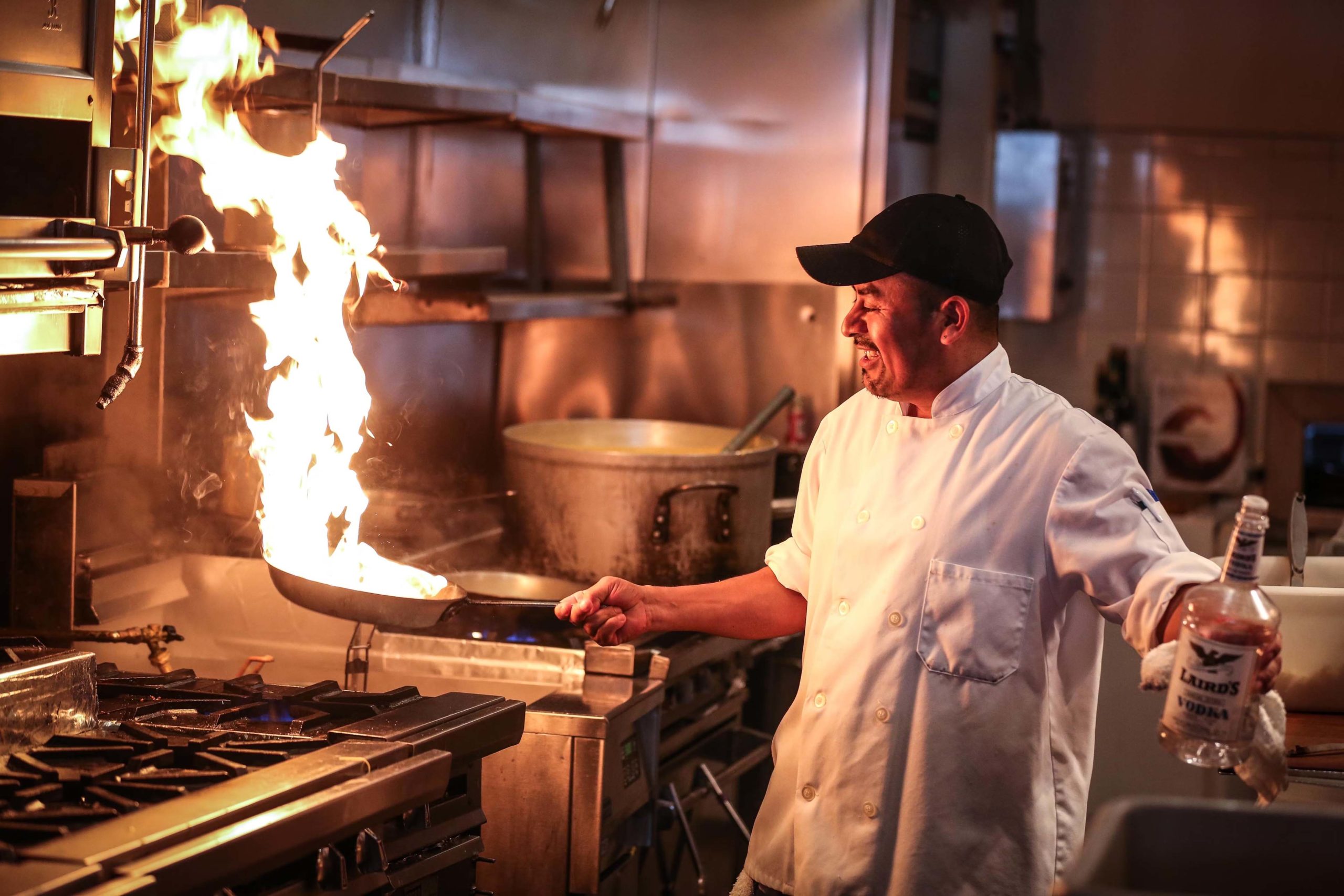Smell, texture, appearance: how chefs evaluate the success of a dish without tasting it, combining sensory expertise and technical precision.
How can you tell if a dish is really successful without tasting it? We tell you everything.
Sensory evaluation in cooking
In a professional kitchen, hygiene, pace, and organizational constraints sometimes require chefs to judge a dish without tasting it. This practice is not based on simple intuition, but on objective technical criteria that are learned over time and with experience. Cooking without tasting does not mean cooking blind, but rather using other senses and reference points. Michelin-starred chefs know how to judge the success of a dish through visual elements, precise textures, and characteristic aromas.
This expertise is rarely covered in traditional cooking classes. It requires careful observation and extensive knowledge of ingredients, chemical reactions during cooking, and seasoning balances. Not tasting food directly is therefore not a coincidence or a whim: it is the result of a control system where every detail counts.
This subject, often overlooked by the general public, raises an essential question: how can a professional guarantee the quality of a dish without tasting it? To answer this question, we must examine sensory indicators, control techniques, and the influence of cultural or gastronomic contexts. Learning to cook also means learning to judge without necessarily tasting.
Rigorous visual inspection: assessing colors, volumes, and liquids
The first indicator of a dish’s success is visual. A trained eye can spot signs of masterful cooking or uneven preparation before a dish is even served. Experienced chefs observe color, shine, texture, and uniformity. For example, meat that has been seared correctly will be evenly caramelized with no burnt areas or residual moisture. A fillet of fish should retain a pearly sheen, a sign of freshness and gentle cooking.
Sauces also offer important clues. A buttery sauce that separates indicates excessive heat or a poor emulsifier. A purée that is too smooth or too runny may indicate overcooked vegetables, poorly controlled hydration, or excessive mixing. This type of visual assessment is taught in professional training but rarely detailed in cooking classes for the general public.
The overall structure of the dish also provides clues about the precision of the chef’s technique. A poorly shaped quenelle of purée, irregular cutting, or imprecise plating are all subtle signs that alert a professional. In gastronomy, every visual detail can reveal a flaw in the execution: uneven cooking, service stress, or poor temperature control.
Michelin-starred chefs often rely on internal guidelines or highly detailed technical specifications. These documents codify the presentation, shine, and height of dishes, sometimes down to the millimeter. The lack of taste is then compensated for by a standardized visual reference. This conformity check is common in large kitchen teams, particularly in luxury hotel restaurants.

A refined olfactory analysis: aroma as a chemical signature
The second sensory lever mobilized without direct contact is smell. Aroma is an immediate indicator of several key parameters: product quality, freshness, seasoning level, and above all, the type of chemical reaction triggered by cooking. An experienced chef can distinguish between grilled and roasted meat just by its smell, or detect an overly reduced sauce before even observing its texture.
Modern cooking relies on mastering the Maillard reactions, which produce characteristic aromatic compounds. Dry cooking produces a nutty or grilled smell, while braising releases more moist and sweet notes. The intensity of a dish’s aroma when it comes out of the oven provides clues about cooking time, acidity, and fat content.
Some Michelin-starred chefs, such as Pierre Gagnaire and Michel Troisgros, even claim to be able to adjust seasoning by smell, especially in sauces and stocks. This level of precision can only be achieved after thousands of hours in the kitchen, but it can be taught through immersion. This empirical knowledge is rarely covered in standard cooking classes, even though it is essential to a professional’s training.
A study conducted by the Institut Paul Bocuse showed that the smells perceived in the first five seconds allow more than 70% of cooking or storage defects in prepared dishes to be detected. This statistic highlights the central role of olfactory analysis in culinary evaluation, especially when tasting is not possible.
A tactile reading of textures and temperatures
The texture of a food, its density, its resistance to cutting or its softness to the touch, provides technical information about cooking, hydration and mastery of technique. Cutting meat allows you to see how heat has been distributed through the muscle fibers. A clean cut, without bleeding, indicates that the meat has been rested. Conversely, pressing on dough or mashed potatoes can indicate excess moisture or a lack of emulsion.
Professionals often use indirect gestures: pressing with tongs, lifting with a spatula, or even testing with a gloved finger. When cooking eggs, for example, the resistance of a poached egg to tongs indicates whether the yolk is still runny. In the case of puff pastry, the sound of the crust when tapped is an indication of even cooking.
This level of tactile perception is only possible when the cook is familiar with the mechanical reactions of ingredients to temperature and humidity. This is commonly taught in culinary schools, but few cooking classes for individuals include it in their curriculum. However, it is a fundamental element in learning to cook with precision.
Internal temperatures are also measured with probes: 52°C for rare meat, 62°C for fish cooked through, 85°C for a well-cooked custard. Chefs use these measurements to ensure absolute consistency, especially in catering or fine dining, where it is impossible to taste every portion.
A cultural and contextual interpretation of success
Finally, a dish can only be considered “successful” in relation to a cultural or personal frame of reference. A risotto that is perfectly al dente for an Italian may be considered too firm by a French customer. The level of spice considered balanced in North Africa may be perceived as excessive elsewhere. Learning to cook therefore also means learning to interpret the expectations of the diner or the standards specific to a given gastronomic tradition.
Chefs often adapt their sensory perception to local customs. In international culinary schools such as Ferrandi and Le Cordon Bleu, this diversity of interpretation is taken into account from the outset of training. A Chinese dish, a Peruvian ceviche, or an Indian curry will not be evaluated according to the same criteria as a French velouté. Success is therefore relative to the culinary context and the target audience.
Michelin-starred chefs do not work in a vacuum. They take into account feedback from the front-of-house team, customer comments, and post-service analysis to adjust their perception. A dish may seem technically perfect but fail to satisfy. Cooking is also about putting yourself in the shoes of the person eating, without tasting their food.
XperienceFrance is your travel specialist in France.
